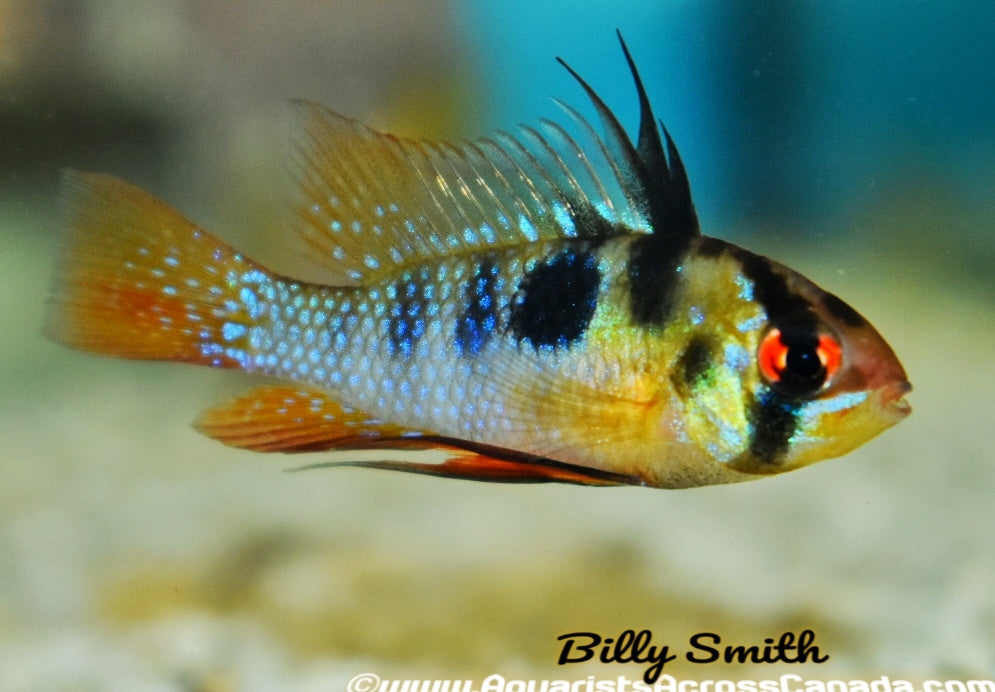SKU:CSA1769L
GERMAN BLUE RAM (Mikrogeophagus ramirezi)
GERMAN BLUE RAM (Mikrogeophagus ramirezi)
35 in stock
Couldn't load pickup availability
Provided adequate cover and structure is available this species is unfussy with regards to décor with ceramic flowerpots, lengths of plastic piping and other artificial materials all useful additions.
A more natural-looking arrangement might consist of a soft, sandy substrate with wood roots and branches placed such a way that plenty of shady spots and caves are formed, plus one or two flat rocks or similar to provide potential spawning sites.
The addition of dried leaf litter would further emphasise the natural feel and with it bring the growth of beneficial microbe colonies as decomposition occurs. These can provide a valuable secondary food source for fry, while the tannins and other chemicals released by the decaying leaves aid in the simulation of natural conditions.
Aquatic plants can also be used with those from genera such as Microsorum, Taxiphyllum, Cryptocoryne and Anubias perhaps most useful since they can be grown attached to the décor, although none of these are native to South America.
Filtration, or at least water flow, should not be very strong and very large water changes are best avoided with regular changes of 10-15% recommended.
This species should never be added to new or otherwise biologically immature aquaria. When conditions deteriorate it becomes susceptible to a condition similar to that referred to as head and lateral line erosion or hole-in the-head in other species which initially manifests itself as small pits formed by eroding flesh around the head and lateral line pores.
Despite normally being sold as such M. ramirezi is not recommended for the general community aquarium since it requires pristine water quality and is a poor competitor, although that is not to say it must be maintained alone.
Groups of peaceful, open water-dwelling characids or similar are particularly recommended tankmates, since the presence of small schooling or shoaling fishes appears to be used as an indicator that there is no immediate threat in the vicinity and therefore can help reduce shyness.
Be sure to research your potential choices in depth and avoid territorial or otherwise aggressive fishes, including most other cichlids, and those requiring harder water.
Juveniles are gregarious but once they reach sexual maturity will begin to form pairs of which each will command a territory a couple of feet across when breeding.
https://www.seriouslyfish.com/species/mikrogeophagus-ramirezi/
Share


